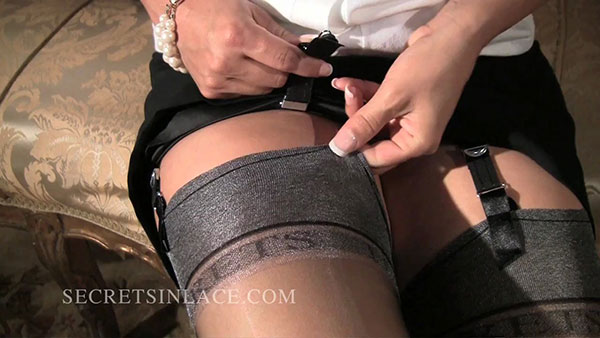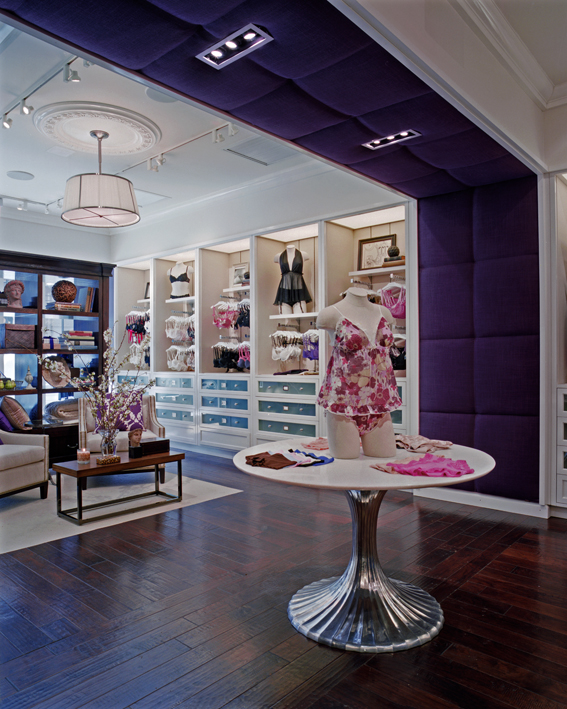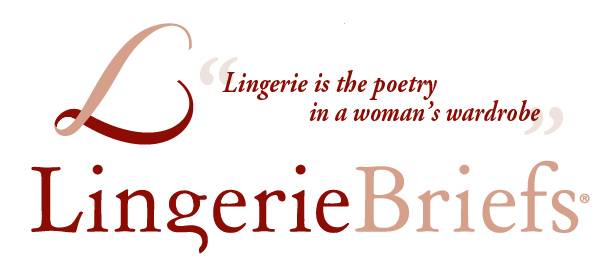Keeping Your Brand Promise ~ The Verve Partnership
By Ali Cudby
When it comes to a lingerie boutique – whether a bricks and mortar or online experience – how you present your environment is critically important to your brand.
For many retailers, décor goes a long way to present the brand. A boudoir environment evokes a mood very different from a store with sleek lines and bright colors. Just looking at two stores we examined earlier in this branding series – Secrets In Lace and Journelle – the pictures speak volumes, and the difference in their brands are immediately obvious.


Beyond colors and furnishings, there are other ways to think about interior architecture when it comes to a brand. To get a different perspective on using retail space, I talked to Kelly Ennis, Managing Principal at The Verve Partnership, a company that plans and designs office interiors.
The Verve Partnership generally focuses on large companies, with 10,000+ square feet, so it’s great to take the lessons learned at the best practice level and apply it to the lingerie industry. Their tag line is “space culture brand” and those are the three components that infuse every project they oversee.
Here’s what Ennis had to say about brand, “Brand is not a product, a color on a wall or a logo. Brand is the emotion and experience a product or service elicits; the emotion is what keeps clients, vendors, employees etc. coming back. A space can “look” awesome and be well designed but if it doesn’t elicit an emotional connection; think repeat revenue or employee retention; then it’s just a space that looks awesome. Think about the Apple Store; the space nailed the concept of the existing brand and relationship that apple has with their very loyal customers.”
Evoking a brand and relating it back to a physical space means asking a lot of the questions already covered in this series:
- Who are you?
- What do you want to be?
- How can you create sustained engagement with customers?
From the Verve Partnership perspective, the answers to these and other questions help clients clarify what they really want, and are strong enough to “create a corporate ecology that supports our clients business plan, human capital and revenue generation,” which far surpasses the constructs of color and furniture selection.
When businesses develop a strategy that ties to the unique nature and culture of their business, it takes branding down to the DNA level of a company. This level of strategy takes time. Says Ennis, We realize that people, clients, businesses typically think interior design and architecture offers “quick fixes” as business solutions, like painting a wall or selecting a great piece of furniture, and we can do that, but seriously, at risk of what? Not tying into a business plan or model that supports on going revenue generation? Strategy matters – it is the backbone of design.”

There are some elements retailers can examine to ensure an improved customer experience without the deep pockets to hire an interior architect like Verve. Here were Kelly’s tips:
1) Plan an experience and connection that supports the message you want customers to receive. For example, small changes in an entry sequence or in a display can really impact visuals and ultimately a sales experience.
2) Use the entry sequence to communicate the brand to the market, and make sure it is the visual that “pulls people in.”
3) Think about lighting, materials, graphics, etc. These components are all key in delivering the brand message.
4) Identify a merchandising strategy to orchestrate the sales experience. Creating distinctive and tailored vignettes and experiences that support the identity are just some of the elements that should be considered.
All of these elements work together from a single cohesive brand strategy that communicates clearly to everyone who comes in contact with the store, no matter the channel. From the owner to employee and customer to sales rep, the more clearly you can define your brand strategy and have it infuse every choice you make as a business, the more it will streamline your decision-making and define your company.
We began this series by defining brand as the promise to your customers. Defining your promise is part of the equation, and the other half is ensuring that every decision you make is implemented according to that promise. When the promise and the implementation play together, the outcome is the beautiful music of a well-tuned brand.


[…] This article first ran in Lingerie Briefs. […]
Great post. Kelly Ennis hits the nail on the head… I completely agree with Kelly that, “Brand is the emotion and experience a product or service elicits; the emotion is what keeps clients, vendors, employees etc. coming back. A space can “look” awesome and be well designed but if it doesn’t elicit an emotional connection; think repeat revenue or employee retention; then it’s just a space that looks awesome.” In celebration of our 25th Anniversary, this year we did a complete rebranding and remodel of our specialty retail ski shop in Killington, VT to do exactly what Kelly describes. I have to say…it has really worked! The feeling of the store when you walk in “oozes” our culture and brand and customers are saying “it just feels good”…they can’t figure out or explain why, they just like the way it looks and feels when they walk in the door. To that end, we have noticed an increase in sales $ too!!